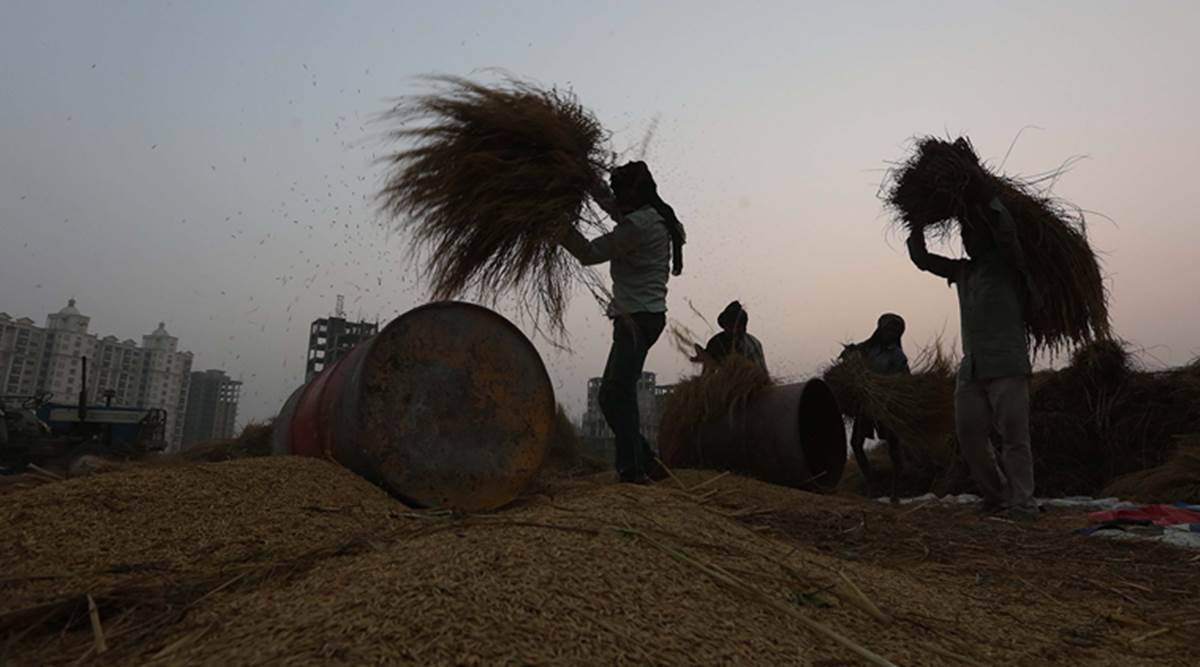 According to these results, the per hectare yield is 856 kg (8.56 quintals) more this year after completion of 73 per cent CCEs till November 3. (Representational)
According to these results, the per hectare yield is 856 kg (8.56 quintals) more this year after completion of 73 per cent CCEs till November 3. (Representational)With 90 per cent of paddy harvesting in Punjab over, the state is now looking at a massive increase in its per hectare yield compared to last year. According to available data, Punjab’s per hectare yield this year is already 856 kg more compared to last year. The average yield has been calculated based on crop cutting experiments (CCEs) being conducted by the Punjab Agriculture Department across the state’s 22 districts. So far 73 per cent CCEs have been completed, and experts said that there may be a minor shift in per hectare yield once 100 per cent CCE results are in.
How is the yield calculated
These experiments (CCEs) are conducted in the field by the teams of the department at the time of harvesting. In a district, different locations are chosen randomly and then the different yields of different fields are calculated to get an average of the district and then an average of all the districts is calculated to get the state’s average.
Total 1,982 experiments were proposed this harvesting season, out of which around 1,450 experiments (73 per cent) have been conducted.
What are the results so far
Data from the Punjab Agriculture Department revealed that the average yield of state has come to 6,878 KG or 6.9 tonnes per hectares (which is around 2.9 tonnes per acre) against 6,022 kg or 6 tonnes per hectare in 2019 and 6,167 kg or 6.1 tonnes per hectare in 2018.
According to these results, the per hectare yield is 856 kg (8.56 quintals) more this year after completion of 73 per cent CCEs till November 3. This yield is 27.84 quintals per acre against 24.38 quintals and 24.96 quintal per acre in 2019 and 2018, respectively.
There are 22 districts in Punjab of which around 50 per cent districts have shown more production in CCEs while six in districts, production is less as compared to last year till date.
“In Faridkot, we have got even 75 quintals (7,500 kg) to 80 quintals (8,000 kg) per hectares (which is 32 quintals per acre) in several fields which more than the last year,” said Chief Agriculture Officer Harnek Singh Rodhe, adding that this time weather was quite favourable at the time of harvesting as there was no rain and hail storm witnessed during harvesting which led to the grain developing properly.
Apart from this, Tarn Taran, Moga, Ludhaina, Sangrur, Fatehgarh Sahib are among districts showing more yield till the time.
“Some districts’ average is more than seven quintals per acre but when we calculate overall state’s average than it comes to 3.46 quintals more per acre as compared to last year,” said a senior officer in the Punjab Agriculture Department, adding that this may increase or decrease after getting the final report of all the proposed experiments.
Experts said that some of the paddy varieties are giving quite high yield up to 30 to 32 quintals per acre and in Punjab all high yield varieties are sown.
The government is also conducting the CCEs of the Basmati crop.
This year harvesting started a little early due to less rains during the September. Normally monsoon ends on September 30 but this time September month got very little rain and that too in the beginning of the month, while crop harvesting started by the end of September and procurement was also began in September against October during previous years.
There are 142 agricultural blocks in the state and CCEs are conducted in each block depending upon the sizes by the department.